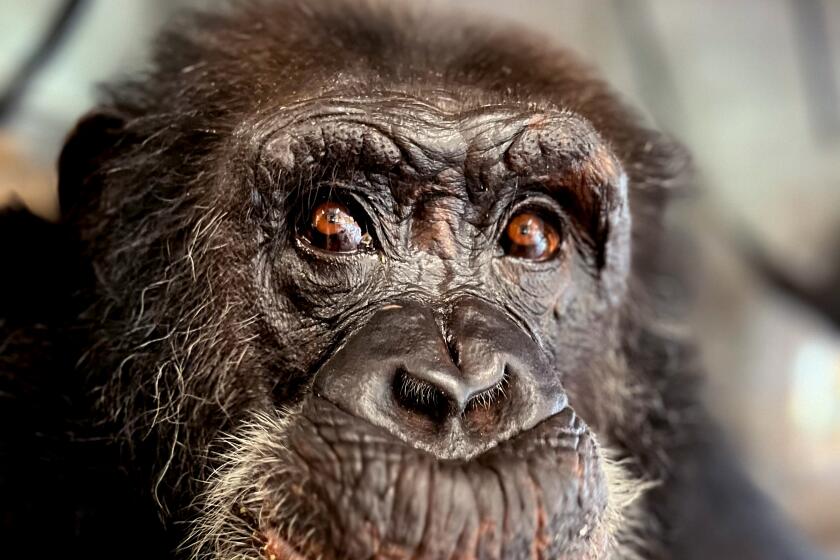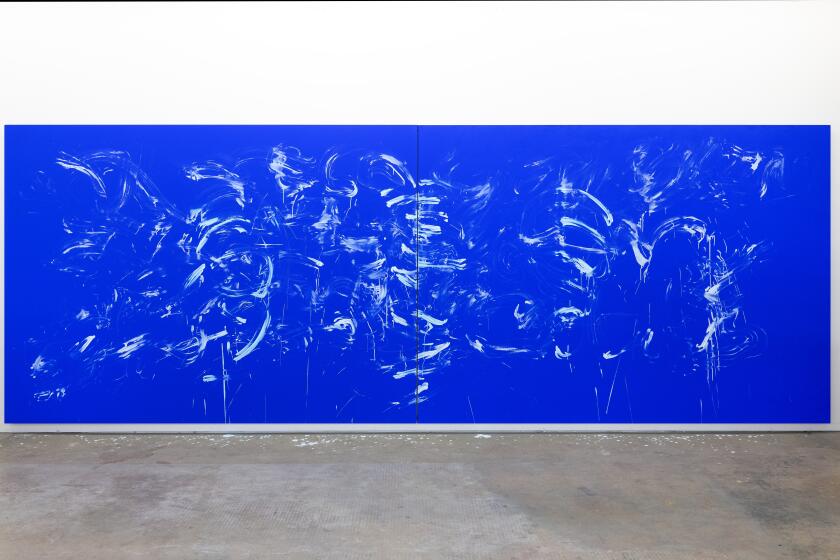SOS Project Focuses Nation’s Eyes on Art : Renovation: Save Outdoor Sculpture enlists volunteers to register and restore public works. Repairs are made, from Capitol Dome to under sea.
Someone stole Andrew Jackson’s stirrups at Lafayette Square. Revolutionary War hero Thaddeus Kosciuszko, the Polish patriot who shares the park near the White House, is without saber and hat.
But all is not lost. Blocks away, Joan of Arc is a new woman, thanks to a wash and wax and replacement of her battle sword. And a make-over of the “Freedom” statue atop the Capitol Dome reveals a bold feather headdress and beatific eyes. A 130-year-old layer of dirt and distress had tourists speculating that she was a macho Roman gladiator or an American Indian.
In Washington and nationwide, thousands of public artworks are getting registered and in many cases repaired by volunteers in a Save Outdoor Sculpture project backed by the Smithsonian Institution.
From the nation’s capital to Seattle, more than 15,000 individuals, private organizations, public groups and governments have joined the SOS effort since 1992, registering three-dimensional outdoor sculptures in hopes of rescuing the artworks from vandals and neglect.
Photographers in Minnesota camped across the state to document 25 outdoor pieces. Roller-skaters in Florida took to the roads. Dallas and Los Angeles instituted “adopt a sculpture” programs. And Girl Scouts earned merit badges by documenting the public works.
So far, more than 22,000 outdoor “sculptures” have been catalogued, from a 12-mile-wide volcanic crater in Arizona to manhole covers in Seattle that depict compasses. More than half of them need repairs, and 10% urgently, the project reports.
“These are the orphans of the art and history worlds, the statues that someone put up more than 100 years ago and forgot,” says Susan Nichols, project director. “Even some well-known sculptures have been neglected.”
The Jackson and Kosciuszko statues in Lafayette Square, for example, have been repaired and cleaned several times over the years, but the U.S. Park Service can’t keep up with vandals and weathering.
The sculpture project administrators, the Smithsonian’s National Museum of American Art and the National Institute for the Conservation of Culture Property, say it’s the largest cultural volunteer effort.
Each community uses its own standards in deciding which works to document. Monuments such as the Statue of Liberty in New York City and the presidential faces carved into Mt. Rushmore in South Dakota are counted.
But the Washington Monument and the St. Louis arch aren’t.
“My definition of sculpture is: Anything that anyone tells me is sculpture is,” says Helen Ingalls, a conservator at the National Museum of American Art who has trained SOS volunteers on how to measure and describe the works for the registry.
Scheduled for completion in 1997 and funded by private and business donations, the registry has prompted many towns to repair public treasures.
Upland, Calif., raised some $40,000 to save its only statue, “Madonna of the Trail,” depicting a female settler and her children, after an earthquake nearly toppled her. In Americus, Ga., the acid rain-pocked “Doughboy,” a copper statue of a World War I soldier, is getting a face lift and his long-lost hand returned. And just off Key Largo, Fla., residents dove with plastic tiles and grease pencils to record a rare underwater image of a beckoning Jesus.
The bronze “Christ of the Abyss” was sunk in about 30 feet of water in 1965. The 7-foot-9 Christ sits on a four-foot base, a copy of a statute off the shores of Genoa, Italy.
More to Read
The biggest entertainment stories
Get our big stories about Hollywood, film, television, music, arts, culture and more right in your inbox as soon as they publish.
You may occasionally receive promotional content from the Los Angeles Times.










